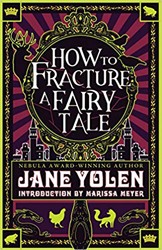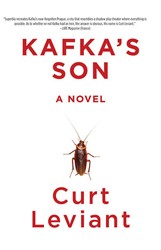Abraham Abinu is the prototypical ‘stranger in a strange land’, the strongest theme in Jewish literature. In his fiction, Moacyr Scliar uses alienness to paint the plight of the new immigrant, and the next generation; perhaps never more so than in his 1980 classic novella, The Centaur in the Garden. The story is narrated by Guedali, the youngest child of Russian settlers in a remote rural section of Brazil. He is born part boy, part colt. He and his family struggle to adapt. Should he be hidden or exploited? How does the special child affect the family dynamic? (Another Jewish theme– favoritism and sibling rivalry.)
Eventually Guedali undergoes an operation to remove the equine hindquarters, and the forelegs gradually morph into human legs and feet. But then the author seems to suggest none of that really happened; he was human all along. Is it a dream? (or nightmare), fantasy, fable, parable, allegory… etc.? (Yes, yes, and yes…) What does it matter, says Scliar; we are all strangers: to our countrymen, to our families, even our spouses, and ultimately to ourselves. Shamelessly borrowing from mythology, folklore, Yiddish literary traditions, the Torah, the Talmud, and Jewish mysticism as well as the shifting reality of Latin American magical realism, Scliar crafts a wonderful, enjoyable story, as well as brilliant messages that transcend the medium.
In Kafka’s Leopards, a beautifully written modern fairy tale, not previously translated, Moacyr Scliar is again at the top of his form, expanding on one of Franz Kafka’s most famous parables. That Scliar admires and pays homage to Kafka hardly needs to be stated- one could hardly imagine a better literary heir. Kafka’s original text, translated into English: Leopards break into the temple and drink up the offering in the chalices; this happens again and again; finally, one can predict their action in advance and it becomes part of the ceremony. This is a strange statement. Maybe it’s in code… Scliar takes that thought and runs, from a Russian shtetl to picturesque Prague (citing Kafka and Rabbi Judah Lowy’s famous Golem as well), to faraway Brazil, weaving a poignant, sometimes comic, tale of intrigue, politics, revolution, misunderstanding, misinterpretation, reinterpretation, love, betrayal, pseudohistory, and a lot more. All this, in such a slim volume.
Both books have valuable, interesting introductions that provide insight and context. In Kafka’s Leopard’s, translator Thomas Beebee notes that “[I]nterestingly, the novella that uses as a character one of the major influences on magical realism exhibits not a hint of that style. .. It is as though the presence of Kafka were enough….” Beebee also sheds light on the connections between Centaur and Leopards. When Moacyr Scliar died in 2011, not only Brazil lost its major fabulist. We all did.

Fiction
Kafka’s Leopards
- Review
By
– March 8, 2012
Sydelle Shamah has been leading book club discussions for many years, and is a published science fiction writer. She was president of the Ruth Hyman Jewish Community Center of Monmouth County, NJ.
Discussion Questions

Jewish literature inspires, enriches, and educates the community.
Help support the Jewish Book Council.



